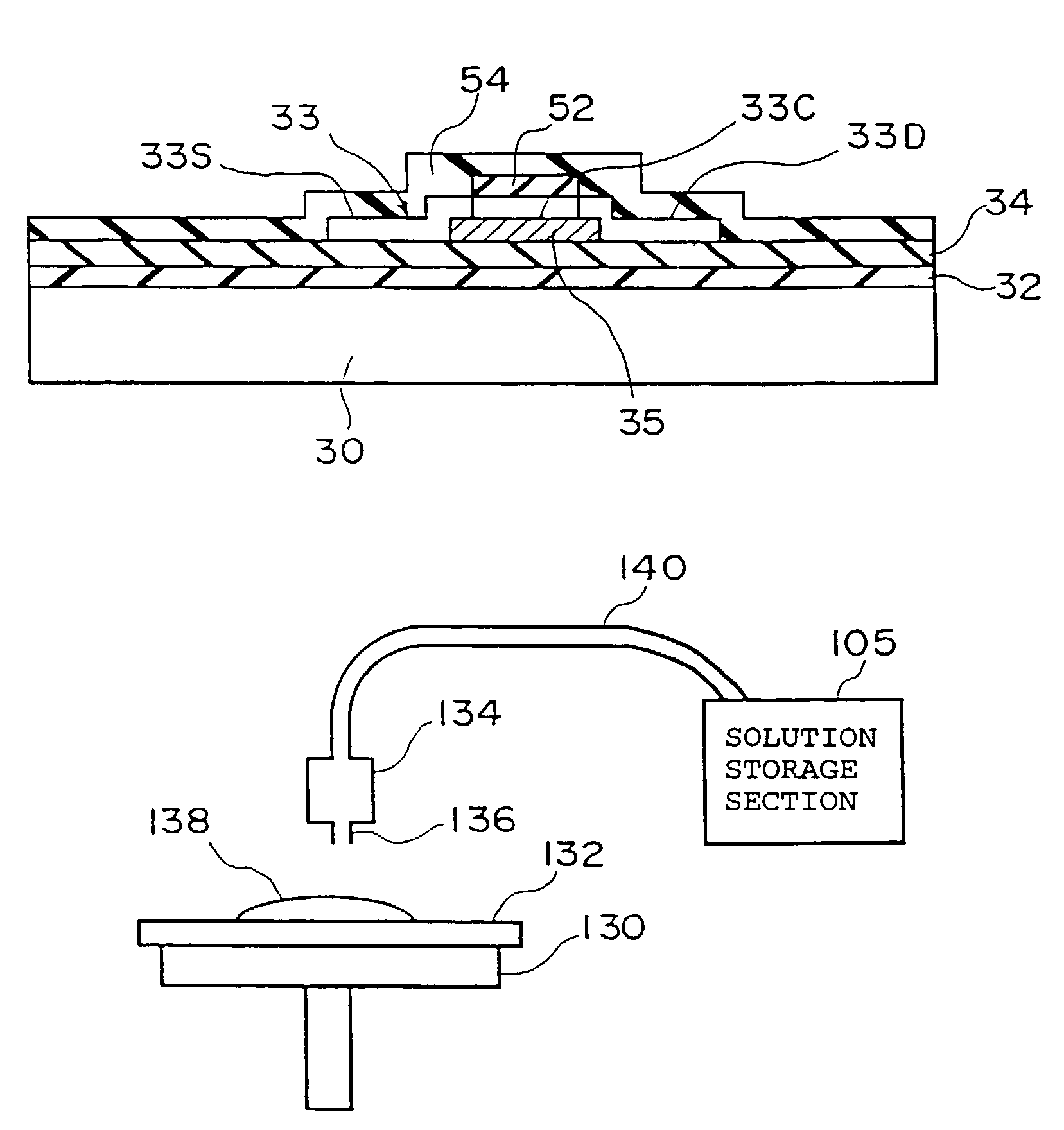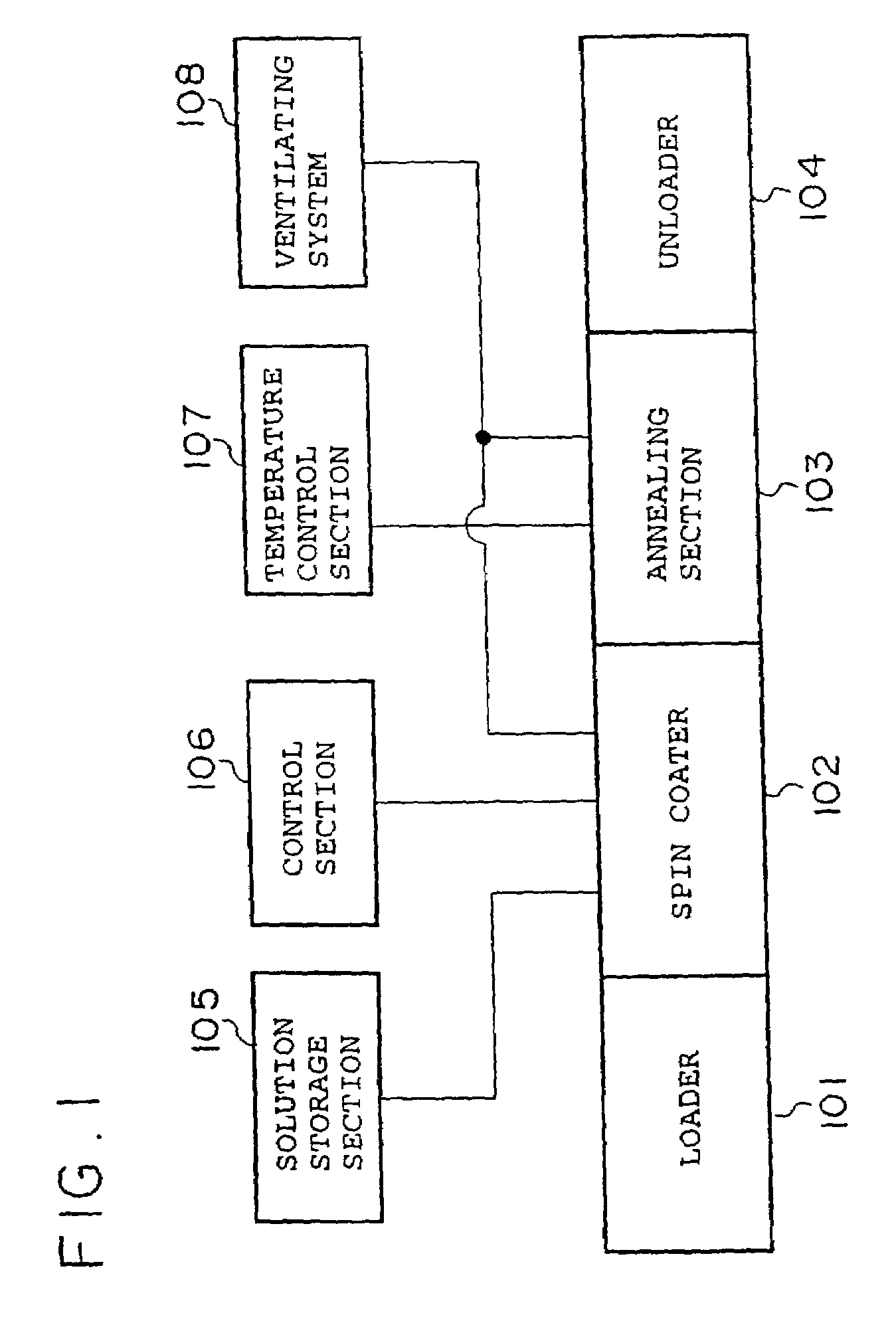Thin film device provided with coating film, liquid crystal panel and electronic device, and method for making the thin film device
a thin film, liquid crystal panel technology, applied in the direction of optics, instruments, transportation and packaging, etc., can solve the problems of low uniformity of film thickness, large dependence on tft substrate cost, and high proportion of the cost of liquid crystal display devices. achieve the effect of high throughpu
- Summary
- Abstract
- Description
- Claims
- Application Information
AI Technical Summary
Benefits of technology
Problems solved by technology
Method used
Image
Examples
first embodiment
[0132](Illustration of Thin Film Device Structure)
[0133]Two examples of thin film devices including TFTs are shown in FIGS. 3 and 4.
[0134]FIG. 3 is a cross-sectional view of a TFT using a coplanar-type polycrystalline silicon. An insulating underlayer 12 is formed on a glass substrate, and a polycrystalline silicon TFT is formed thereon. In FIG. 3, the polycrystalline silicon layer 14 comprises a source region 14S and a drain region 14D which are highly doped with an impurity, and a channel region 14C therebetween.
[0135]A gate insulating film 16 is formed on the polycrystalline silicon layer 14 and a gate electrode 18 and a gate line (not shown in the drawing) are formed thereon. A pixel electrode 22 composed of a transparent electrode film is connected to the drain region 14D through an opening section formed in an interlevel insulating film 20 and the gate insulating film 16 thereunder, and a source line 24 is connected to the source region 14S. A topmost protective film 26 may be...
second embodiment
[0216]FIG. 18 is an enlarged partial plan view of pixel regions formed on an active matrix substrate for a liquid crystal display device, and FIG. 19 is a cross-sectional view taken along section I–I′ of FIG. 18.
[0217]In FIGS. 18 and 19, the active matrix substrate 400 for the liquid crystal display device is divided into a plurality of pixel regions 402 by data lines Sn, Sn+1 . . . and scanning lines Gm, Gm+1 . . . on an insulating substrate 410, and each of the pixel regions 402 is provided with a TFT 404. The TFT 404 is provided with a channel region 417 forming a channel between a source region 414 and a drain region 416, a gate electrode 415 opposing to the channel region 417 with a gate insulating film 413 formed therebetween, an interlevel insulating film 421 formed on the top face of the gate electrode 415, a source electrode 431 electrically connected to the source region 414 through a contact hole 421A formed in the interlevel insulating film 421, and a pixel electrode 441...
third embodiment
[0233]FIG. 22 is an enlarged partial plan view of pixel regions formed on an active matrix substrate for a liquid crystal display device, and FIG. 23 is a cross-sectional view taken along section II–II′ of FIG. 22.
[0234]In FIGS. 22 and 23, differences between the thin film device configuration on the active matrix substrate 401 for the liquid crystal display device in accordance with the Third Embodiment and the thin film device configuration on the active matrix substrate 400 for the liquid crystal display device in accordance with the Second Embodiment are as follows.
[0235]The Third Embodiment employs a double-layer-structure interlevel insulating film including a lower interlevel insulating film 421 formed on a gate electrode 415 and an upper interlevel insulating film 422 formed on the lower interlevel insulating film 421. A source electrode 431 is therefore formed on the lower interlevel insulating film 421 and is electrically connected to a source region 414 through a contact ...
PUM
| Property | Measurement | Unit |
|---|---|---|
| thickness | aaaaa | aaaaa |
| temperature | aaaaa | aaaaa |
| temperature | aaaaa | aaaaa |
Abstract
Description
Claims
Application Information
 Login to View More
Login to View More - R&D
- Intellectual Property
- Life Sciences
- Materials
- Tech Scout
- Unparalleled Data Quality
- Higher Quality Content
- 60% Fewer Hallucinations
Browse by: Latest US Patents, China's latest patents, Technical Efficacy Thesaurus, Application Domain, Technology Topic, Popular Technical Reports.
© 2025 PatSnap. All rights reserved.Legal|Privacy policy|Modern Slavery Act Transparency Statement|Sitemap|About US| Contact US: help@patsnap.com



